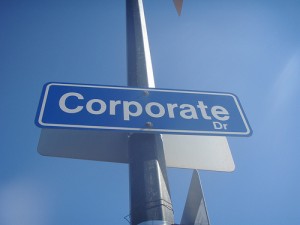So I had an insanely busy past few weeks, and this last one was pretty much the end of it. Big highlight was taking in MeshU 2009 at the MaRs Discovery District this past Monday. After attending Refresh Events on March 23rd ( watch out for these events, they fill up insanely fast!) I won a ticket to attend MeshU (thanks!). The first convention I attended in 2009 , I walked away with some great learning and experience. Although there were 3 streams (Design,Programing, Management) as a marketer I’m more experienced in the organizational portions of business so I opted to stick with the management stream for the day. Here is a brief run down of all the sessions I attended and a few of the key learning points I gained:
1. Finding and Keeping Startup People, Daniel Debow (Rypple) :
For anyone not involved in HR the first knee jerk reaction to this is to zone out, but the key insight from this session is in a start up EVERYONE needs to be involved in getting great people on board. Looking at my notebook I have a lot of little points written down but the key things are that everyone should be actively seeking great people to bring into the organization ( the idea that great people bring more great people) and that firms should build a company culture where people will want to be ‘friends’ with the company. Through this they may take an active role in seeing how the company is progressing and eventually feel passionate about signing on with them if asked.
As well, getting great people doesn’t happen overnight. The process needs to be as transparent as possible clearly stating the risks of joining the company. In the end both you and the candidate are investing a lot into this relationship and it needs to be developed not smashed together.
2. Selling Agile Development , Dominic Bortulussi (The Working Group):
For someone who isn’t a web developer/programmer I had a bit of difficult time getting my head around this but by applying the topic in a more general business/client sense it became a lot more understandable. To think about a regular client/business relationship you have one side who has a task that needs to be done and specifies a price that they are willing to pay. Then on the other side there is a company who approaches the client and provides the service for them.Very simple. But thinking deeper its not.
Like all things in life not all projects go out with out experiencing problems or delays.There can also be the case where a client suddenly wants additional specifications added. Very often either the company or the client suffers having to take a loss on the project or not getting everything they wanted. That’s where the flexible project practice the “Target/Scope Model” comes in:
- The client sits down with the company to determine a set price and key project needs. Additional optional features are discussed and priced out.
- As the project continues the client removes and adds scope to the project depending on how ahead/behind progress the project is.
- Any scope added/removed from the project is discounted at 50% of the price ( ex: a new feature is added because the project is running ahead of schedule, an optional feature is added for half its price)
There are some criticisms in terms of it being very meeting heavy (between 15%-30% of the project is spent in client/provider meetings) but especially in the consulting field the idea of flexible pricing and having a project be more realistic to the needs of both the client and producer is a really interesting idea.
For more info check out the powerpoint from the presentation
http://docs.google.com/Present?docid=dn7623p_7pdc5b7cd
3.Lessons learned: How I founded, bootstrapped, grew and sold my web startup,Carl Mercier ( Defensio) :
Very often startups feel that they can’t survive without having venture capital funding. Attending this session I learned that you can go it on your own and perhaps be even more likely to walk away profitable. Rather than having an investor who will have first go at your profits you control the revenues and can sell at lower thresholds in comparison.
In part Carl Mercier spoke about having an effective marketing plan (Digg doesn’t work!) and a strong business strategy from the start(neither does an advertising revenue model!). Compared to a funded start up, a bootstrapped start up needs to be making money fast and must also do away with all of the niceties they could have had being funded (must have cheaper offices, used equipment, less flash). Important to all companies but especially to bootstrapped startups is the connection the firm has with their customers especially the early adopters. These are the people who will be selling your company to their friends,family and everyone else around them. Treat them right!
4.Segmentation, Positioning and Storytelling: How a Smart Market Strategy Can Drive Growth, April Dunford ( Rocket Launch Marketing)
As someone studying marketing I was really excited for this session, and I wasn’t disappointed. While there was a lot of no brainer marketing things (for me anyways) like segmenting your market (you can’t target everyone!) there were some good points made in terms of selling your company/product:
- Creating a strong value proposition: Tell up front why your customer should buy your product and what makes you different from your competition ( customers don’t want to think!)
- Create a personal story of your company to tell to customers, it builds a stronger connection and is more effective than listing off facts. They come in 3 forms: Customer Success ( how has the product/service positively affected a customers business) , Competitive Win ( how did you one up your competitor) and Company creation ( such as how Youtube was supposedly started in someones garage *Wrong*) .
- Communications is VERY important. For whatever initiative you do be it a website, using social media , all the way down to your corporate culture , companies need to have a clear and targeted message. Don’t make it too formal or generic , every piece of messaging should be targeted towards the customer and leave an impression. Another key to this is to remain consistent, everyone should be on board saying the exact same thing even when it may seem repetitive as this is how your company is being portrayed to the public.
5. Boiling the frog: how to get everyone else as excited about your idea as you are, Jason Oke
( Juniper Park) :
I think this presentation complimented well with April Dunford’s presentation. This presentation furthered the idea of effectively communicating yourself to clients. Lets face it when faced with change most people try to resist it ( interesting enough I learned from this presentation that the ipod was at first rejected) but by being passionate and targeted with your presentations you can defeat objections and win over people.
Again the idea of telling a story was presented. People need to be sold on the process as well as the product. Often times we are too modest or self defeating of ourselves , we need to stop this as sometimes we can actually kill good ideas. While a strong business case is always important, demonstrating your passion to others and how this came about is important as well. Jason Oke presented the idea of going beyond the old powerpoint or boring report for the idea of being multimodal : present some of the tools or inspirations that your team worked off of, bring in a customer to use and demonstrate this product and tell your customer what they think, or go a completely different route and give them something like a book describing the story of your product. To get your customer on board you need to make them part of the process, allow them to give input and take an active part of your presentation so they feel a stronger connection with your company and what you’re trying to sell!
Have any Questions/Comments? Contact me at kevin.richard@ryerson.ca or send me a twitter message.














